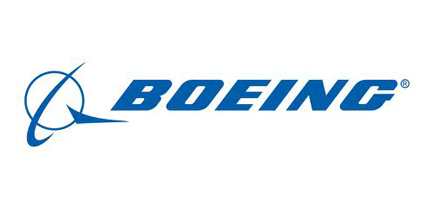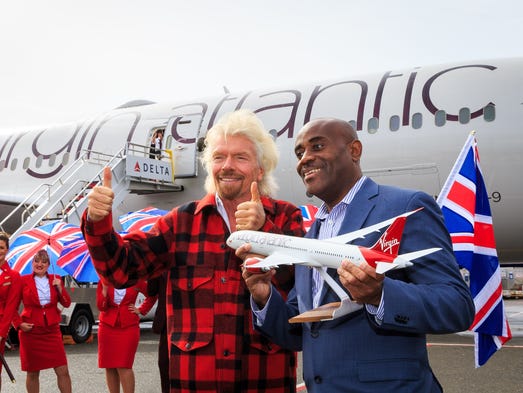Leeham News and Analysis
There's more to real news than a news release.
Pontifications: 787 production rate remains a question
April 10, 2017, © Leeham Co.: Boeing’s first quarter earnings call is scheduled for April 26, two weeks and two days from today. Officials said on the January earnings call, for year-end 2016, that they will decide this year whether to increase the 787 production rate to 14/mo by the end of the decade.
LNC has long believed this won’t happen. In fact, we predicted last September Boeing will have to lower the production rate from 2020.
The question of the rate is sure to come up on the 26th. I doubt CEO Dennis Muilenburg will be prepared to announce a decision one way or the other. It’s Boeing’s pattern to put off announcements like this until the very last minute, so a go-no go on rate 14 probably won’t be announced until toward the end of the year.
Middle Eastern airline turmoil hits Boeing
Subscription Required
Introduction
April 10, 2017, © Leeham Co.: Tim Clark of Emirates Airline said the new breed of long-haul, low cost carriers are hurting EK’s load factors and yields.
Etihad Airlines’ business strategy of taking financial stakes in LCCs hasn’t produced the positive financial results desired.
Three big airlines, EK, EY and Qatar Airways, face over-capacity now compounded by electronic carry-on restrictions by the US and UK.
The thee carriers largely compete for the same connecting traffic through hubs only 72-235 miles apart (Figure 1). This is like having hubs in Milwaukee and Chicago (81 air miles apart) and Chicago-Detroit (237 air miles) with much, much smaller domestic catchment basins.
Summary
- Declining financial results for Emirates, Etihad.
- Deferring airplanes: 787s, 777X
- Long-haul LLC, Trump travel ban, poor investments hurt the airlines.
Bjorn’s Corner: Aircraft engine maintenance, Part 6
April 7, 2017, ©. Leeham Co: Last week’s Corner developed the overhaul shop visits per year for wide-body engines. We will now look at how the market develops around these overhaul opportunities.
How does the shop structure develop over a popular engine’s life-cycle? How much choice has an operator and when?
Things get worse before better at Cathay
April 6, 2017, © Leeham Co.: Cathay Pacific Airways faces a loss this year after posting its first loss in eight years last year.
Analysts following the Hong Kong-based airline see another loss, with declining revenues and pricing pressure from competition.
Could an NMA be made good enough, Part 3?
By Bjorn Fehrm
Subscription Required
Introduction
April 6, 2017, © Leeham Co.: After sizing the cabin of the NMA, the time has now come to size the fuselage. Can a fuselage be designed that gives an NMA “dual aisle comfort with single aisle economics”?

Figure 1. The NMA takes more and more the shape of a 767 replacement (A United 767-200). Source: United
We will investigate the dimensions, the drag and the weight of an NMA fuselage. It will be based on the cabin and design techniques we described in Part 2. We then compare the efficiency of the result with the fuselages of the Airbus A321LR and Boeing 767. This will show if the necessary efficiency can be achieved.
Summary:
- It’s possible to design a dual aisle fuselage with the same perimeter per seat abreast as a single aisle fuselage.
- This will make the central, cylindrical, section have competitive weight and drag characteristics.
- The larger diameter of the dual aisle fuselage will increase the size of the tapered front and rear sections however.
- It’s still possible for an NMA fuselage to be as weight-efficient as a single aisle fuselage, measured per transported passenger.
Irkut MC-21 missing ultimate load test
By Bjorn Fehrm
April 05, 2017, ©. Leeham Co: United Aircraft’s IRKUT MC-21 passed 90% of the static Ultimate load test end February at the TsAGI test institute in Moscow, reports ATO.RU. But the aircraft failed the 100% test.
The test simulates a load which is 150% higher than the highest load that the aircraft should be subject to in its operational life. The test failure does not stop the aircraft from beginning flight testing, for that the aircraft needs to pass the limit load test (highest load during flight), which it has. Missing the Ultimate load test for new airliners is nothing unusual. The designers tries to pass this test with the smallest possible margin. Any excess margin will make the aircraft unnecessary heavy. Other aircraft to have missed the test are Mitsubishi Aircraft’s MRJ, Airbus’ A380 and Boeing’s 787.
Missing the Ultimate load test for new airliners is nothing unusual. The designers tries to pass this test with the smallest possible margin. Any excess margin will make the aircraft unnecessary heavy. Other aircraft to have missed the test are Mitsubishi Aircraft’s MRJ, Airbus’ A380 and Boeing’s 787.
According to ATO.RU, who quotes IRKUT, the reinforcements in the wingbox necessitated by the failure will weigh 25kg. It’s not clear if the changes will affect the start of test flights. These should have started during April.
Pegasus Airlines, bridging Europe and Asia
By Bjorn Fehrm
April 05, 2017, ©. Leeham Co: Turkey’s Pegasus Airlines has its operations center south of Hungary’s Wizz Air that we wrote about last week. With a hub in Istanbul, the Turkish LCC connects Europe and West Asia/Middle East.
 Pegasus is a fraction larger than Wizz Air and had the same dynamic development until last year, when the internal unrest in Turkey threw a spanner in the airline’s growth. Read more
Pegasus is a fraction larger than Wizz Air and had the same dynamic development until last year, when the internal unrest in Turkey threw a spanner in the airline’s growth. Read more
Pontifications: Branson gets pissy over dropping the Virgin America name

By Scott Hamilton
April 3, 2017, © Leeham Co.: Sir Richard Branson came to Seattle last week to promote the new service by Virgin Atlantic Airlines to London. In a hissy-fit, he promptly pissed on Alaska Airlines for the business decision to drop the Virgin America brand in 2019.
Alaska, of course, acquired Virgin America last year. The acquisition didn’t sit well with Branson, who nevertheless made out well in the deal.
Although Alaska officials said they would decide later whether to retain the Virgin brand, only those with wishful thinking gave any chance of this happening.

Richard Branson in Seattle for Virgin Atlantic’s new service to London. USA Today photo via Google.
Branson certainly knows this. In 1997, Virgin Group acquired the low fare carrier Euro Belgium Airlines for $60m and promptly dropped the name in favor of Virgin Express.
VE lasted only nine years; it ceased operations in 2006 when it was sold and merged into the new Brussels Airlines.
Branson’s whining over Alaska’s decision to operate the merged operations into the Eskimo’s image smacks of hypocrisy.
Let’s also remember that his Virgin Atlantic is 49% owned by Delta Air Lines, which is building a hub in Seattle in competition with Alaska. The fight between Alaska and Delta is sometimes bitter.
Branson’s criticism of Alaska might have as much to do with Virgin Atlantic’s partnership with Delta as it does his own bruised ego.
Could an NMA be made good enough, Part 2?
By Bjorn Fehrm
Subscription Required
Introduction
April 3, 2017, © Leeham Co.: In the first part of our investigation on how good an NMA can be, we explored low weight and drag fuselage design. We will now continue with the design consequences for the fuselage construction and the cabin.
What drives whether one goes for an Aluminum or CFRP (Carbon Fiber Reinforced Polymer) fuselage?

Figure 1. The NMA takes more and more the shape of a 767 replacement (A United 767-200 pictured). Source: United.
What will be the typical dimensions for an NMA fuselage and what will be passenger capacities?
Summary:
- An elliptical fuselage will force a CFRP design.
- The fuselage door configuration will be critical for cabin capacity and flexibility.






